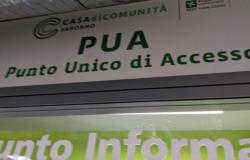Celiac disease and holidays can go together: eating out for those who can’t tolerate the gluten it can be a source of anxiety, but with some forethought you can enjoy your holidays without problems.
The complete guide
This is underlined by the Italian Celiac Association (Aic) which has drawn up some advice in view of the summer. In fact, as Rossella Valmarana, president of Aic, specifies: «A trip to a new location with traditional foods that you don’t know, the change of rhythms and habits are elements that can be stressful for a person with celiac disease. When eating out on holiday, it is essential to know that you can choose gluten-free dishes safely. For this reason, Aic renews its commitment to expanding the offer of businesses adhering to the gluten-free Eating Out program, which already offers a Guide with over 4 thousand trained locals on celiac disease, recognizable through window decals on shop windows”.
Stock and precautions when travelling
If it is not possible to go to a restaurant in the Guide, you should not give up on the restaurant but inform the staff of the ingredients that cannot be consumed and, if in doubt, avoid ordering “risky” dishes.
The same applies while traveling on trains, ferries, planes or on the motorway: in addition to checking on the website www.celiachia.it which companies have collaborations with Aic to guarantee safe meals for celiacs, if you travel by plane or ferry it is good find out first of the possibility of gluten-free meals, which many companies guarantee and it is however advisable to request them at the time of booking or at least a week before departure, always confirming at check-in in the case of flights. There Celiac Disease Foundation However, the American adds that it is always better bring safe food with you as a backupfor example bars, snacks, nuts, or perhaps even pieces of cheese, fresh fruit and vegetables, taking care to check whether it is possible to bring them on board and if anything asking the doctor for a letter that can justify the transport of food.
Useful phrases and sites
When traveling abroad it is useful to know, as AIC points out, that even in Europe and the United States the word gluten-free refers to a content of less than 20 parts per million, or 20 mg of gluten per kilo of food; to find places to eat safely you can rely on the associations or scientific societies of the country you will visit (in the United Kingdom: coeliac.org.uk; in the USA: celiac.org) or, in Europe, refer to theAssociation of European Coeliac Societies (aoecs.org) which in addition to giving useful advice on where to eat and shop gluten-free in Europe also reports Useful phrases about celiac disease translated into all languages.
Traditional dishes from the gluten-free world
Sometimes it is not necessary to look for gluten-free versions of dishes, because when traveling you come across recipes from the local tradition which are in themselves gluten-free and allow you to eat fresh, unprocessed foods in complete safety.
This is underlined by a document from the US Celiac Disease Foundation, which invites celiac travelers to explore foreign culinary traditions because they are often a source of pleasant surprises: in South-East Asia, for example, dishes based on rice or rice noodles, but also those made with coconutthey are naturally gluten-free and the same goes for chickpeas and the different types of curries typical of Indian cuisine. In South America beans, corn and tapioca products they are, in addition to rice, the basis for the majority of recipes and these countries are therefore an “easy” destination for celiacs; in Africa and the Middle East you can focus on traditional dishes based on teff, lentils, millet and cassavavery widespread and safe sources of starches.
A little more caution is needed in Japan and Korea: rice, fish and meat in typical recipes are gluten-free, but many condiments contain soy sauce and this is not always gluten free, better to ask for tamari which instead is. Avoid udon and ramen, which are made from wheat, while you can instead eat them traditional soba noodleswhich are made from buckwheat and, despite the name, gluten-free.
To avoid getting into trouble, however, experts also recommend carrying the so-called “celiac cards” with you, basically the translation into several languages about what you can’t eat and the phrases you might need when sitting in a restaurant on the other side of the world.
What about ice cream?
Is ice cream always celiac-proof? As the Aic experts explain «not only the cone must be gluten-free: milk, yogurt, sugar and eggs are permitted, but ice cream may contain ingredients at risk because they are processed such as semi-finished products, ready-made bases, garnishes and decorations. Furthermore, ice cream parlors, like other establishments, must follow precise procedures to avoid gluten contamination during preparation and service.”
Celiac-proof ice cream parlors in Italy are collected in the Guide of the Aic Alimentazione Fuori Casa programme, available in paper version, on the website www.celiachia.it and on the app Aic mobile, constantly updated with the map of gluten-free places and shops where to buy gluten-free food, as well as with the food handbook. The latter can help you find even the safest packaged ice cream.




